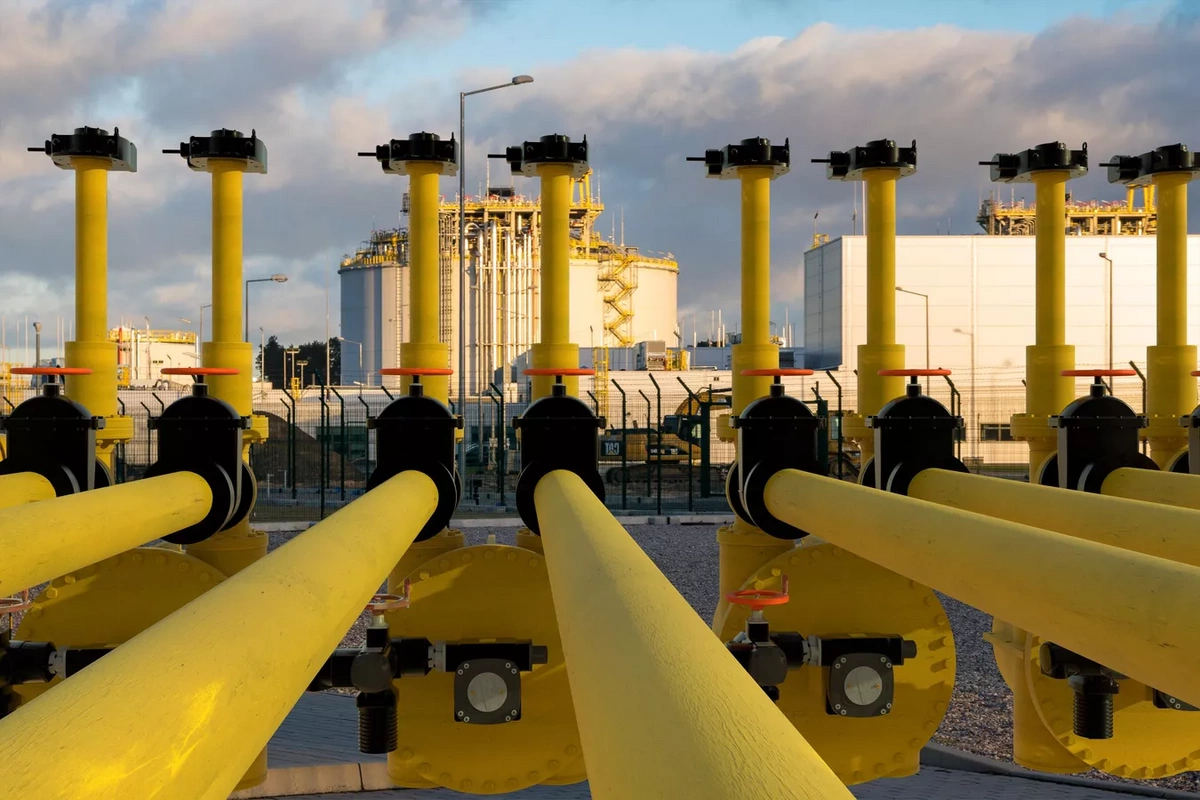
Photo: iStock
According to Georgia’s National Statistics Office, in the first quarter of 2025, Georgia’s purchases of Russian gas surpassed those of Azerbaijani gas for the first time in 18 years. During this period, Georgia imported Russian gas worth $100.6 million, compared to $82.4 million worth of gas from Azerbaijan.
Russian gas is delivered to Georgia through the North-South pipeline, which runs onward to Armenia. Until 2015, Georgia was compensated for the transit of Russian gas by receiving 10% of the volumes in kind, but later switched to monetary payments.

Stanislav Tkachenko, Professor at St. Petersburg State University and Doctor of Economic Sciences
The Caspian Post spoke with Dr. Stanislav Tkachenko, Professor at St. Petersburg State University and Doctor of Economic Sciences, to explore what is behind this shift.
Why Did Georgia’s Russian Gas Purchases Surge in 2025?
"The increase in Russian gas imports is the result of objective market factors that have developed over the past few years," Tkachenko explains. "There are several key differences between Azerbaijani and Russian gas on the Georgian market."
"First, Azerbaijani gas is supplied under long-term contracts with either fixed prices or pricing formulas linked to the cost of alternative energy sources such as diesel or fuel oil. Russian gas, on the other hand, is usually sold through spot market deals, reflecting real-time supply and demand. Typically, spot prices are slightly lower than long-term contract prices-but there are exceptions, and that is precisely what we are seeing now."
"Second, the two gas supplies serve different types of consumers in Georgia. Azerbaijani gas is primarily used by state-run utilities for heating and power generation at thermal power plants. Russian gas, by contrast, is purchased by private companies for industrial processes, refueling stations, and household use. These consumer groups have different seasonal demands, which impact pricing. For instance, during the winter months, Georgian consumers increased their purchases of Russian gas and consequently paid higher prices."
"Third, Azerbaijan’s primary gas market is Europe, where customers have stronger purchasing power. Most of Azerbaijan’s gas production has already been contracted under long-term agreements. This limits Baku’s ability to sharply ramp up deliveries to Georgia. Russia, by contrast, has lost access to the European market and now faces a surplus of unsold gas. Companies like Gazprom are actively seeking new markets, and Georgia has become one of them."
Is Georgia Returning to Russian Gas?
"Yes, the return of Russian gas to the Georgian market is accelerating, and this is an entirely logical development," Tkachenko says.
"Following the COVID-19 pandemic, Georgia entered a period of rapid economic growth. In 2024, the country’s GDP grew by a record 9.4%, and this trend is expected to continue, possibly reaching 10% by the end of 2025. To sustain this pace, Georgia needs to secure additional energy resources."
"Historically, Georgia has relied on hydropower and thermal power plants fueled by coal and fuel oil. Today, the country is transitioning toward renewable energy sources and sharply increasing natural gas consumption, which is considered cleaner than coal or fuel oil. Since 2012, Georgia has built 66 new thermal power plants, with dozens more under construction or undergoing modernization-including gas-fired plants. Over the coming years, the government plans to connect 400 new communities to the national gas grid, expanding its use for both heating and cooking."
"Since 99% of Georgia’s gas imports come from Azerbaijan and Russia, these two suppliers effectively dominate the market. As noted earlier, Azerbaijan has limited capacity to boost exports, prompting the Georgian government to expand imports from Russia. This trend is likely to continue for at least the next three to four years."
What Role Does the North-South Pipeline Play, and How Has the Transit System Changed?
"The North-South pipeline was commissioned in 1988, relatively late, and did not have a major impact on Georgia’s economy. Its design capacity is about 16 million cubic meters per day, although actual volumes have been lower," Tkachenko explains.
"Until the mid-2010s, Georgia was compensated for transit services with in-kind gas payments of about 150-200 million cubic meters per year. In 2015, Georgia switched to monetary compensation and used these revenues, among other things, to purchase Azerbaijani gas-a practice that continues today."
"What’s changed is the rising demand for Russian gas in both Georgia and Armenia. While Armenia previously imported small volumes of gas from Iran, recent tensions in Armenian-Russian relations have made Iranian gas increasingly vital for Yerevan. However, negotiations over supply volumes and pricing have been difficult and remain unresolved."
"Russia plans to increase gas exports to Armenia to 2-2.5 billion cubic meters annually, fully utilizing the North-South pipeline’s capacity. This raises the question of building a new pipeline or significantly expanding the existing one. However, such a project is unlikely without the normalization of political relations between Moscow and Tbilisi."
"If no agreement is reached, Georgia may seek additional supplies from Azerbaijan or explore alternative sources such as Iran, Turkmenistan, or liquefied natural gas (LNG) via new terminals on the Black Sea coast. However, each of these options requires substantial investment and could take five to ten years to realize."
Share on social media